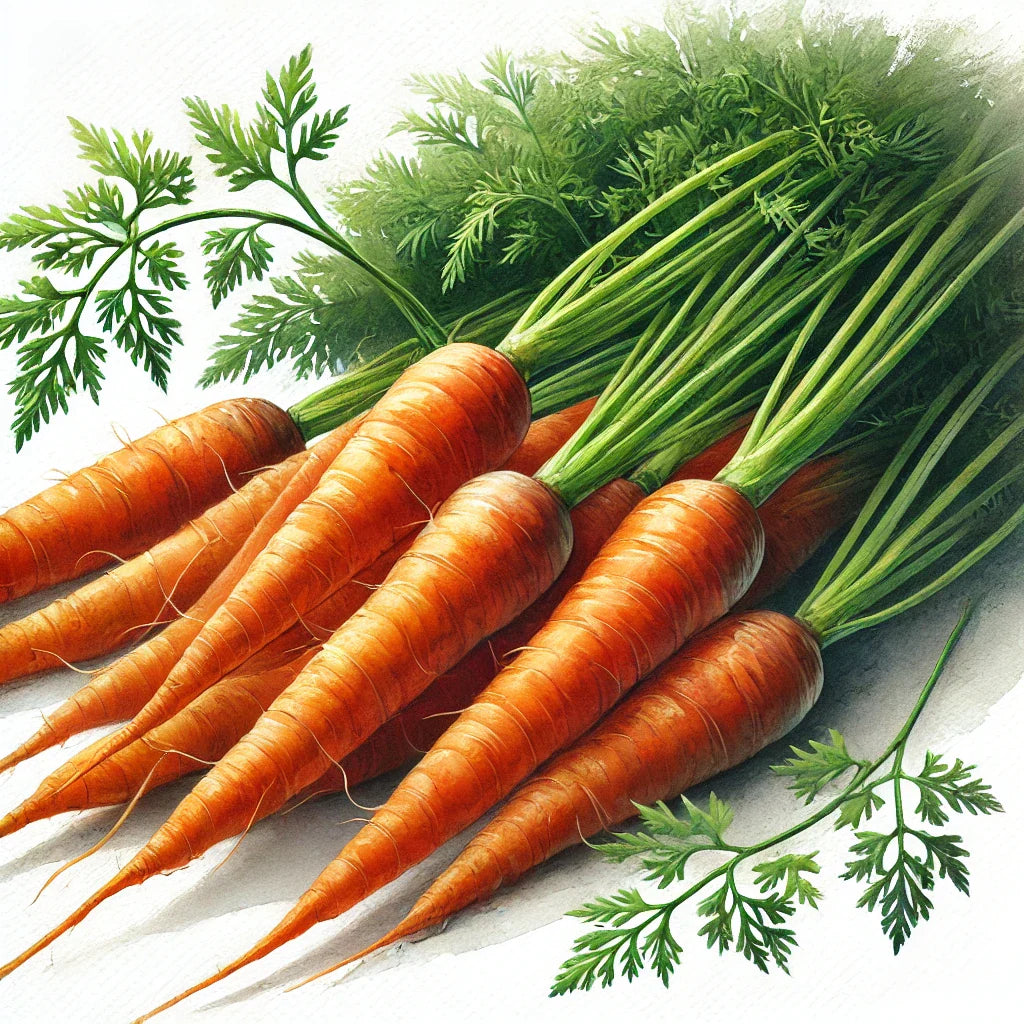
Grow and Save Carrot Seeds: A Guide with a Dash of Humor
How to Grow Carrots
Carrots are one of the most beloved veggies—crunchy, sweet, and excellent for both snacking and annoying your dog by pretending you have a treat. These orange (or purple, yellow, and white!) roots are not just a kitchen staple; they also store well and produce seeds that double as a culinary spice. However, carrots can be a bit fussy, especially in their early days. But don’t worry, with a little patience and some dirt under your nails, you’ll be well on your way to carrot success.
Time of Planting
Carrots, like rebellious teenagers, don’t like the cold but also don’t want it too hot. Plant seeds directly outdoors when the soil reaches at least 45°F. If you plant too early, they may refuse to sprout just to spite you.
Spacing Requirements
Carrot seeds are tiny and can be tricky to space evenly. Plant them about ¼ inch deep and 1 inch apart. Later, when the seedlings have grown enough to make things crowded, thin them to 2-3 inches apart so they don’t have to fight over resources like siblings at the dinner table. Keep rows 16-24 inches apart—give your carrots room to breathe!
Time to Germination
Carrots take their sweet time to sprout, anywhere from 7 to 21 days. If you’re impatient, resist the urge to poke at the soil to see if they’re growing. They don’t like being rushed.
Special Considerations
Carrot tops tend to poke out of the soil as they grow, which can cause them to turn green and bitter. Cover those exposed shoulders with mulch or soil to keep them sweet and happy.
Common Pests and Diseases
Carrots attract their fair share of troublemakers, including carrot rust flies, flea beetles, and slugs. If you see signs of attack, try using row covers or planting deterrent plants nearby. Also, thin carrots on an overcast day—this makes them less likely to release "distress signals" that attract pests. Nature is basically a soap opera.
When and How to Harvest for Food Consumption
When your carrots have reached full size (which varies by variety), gently pull them up by their tops. If you have deep-rooted varieties, loosen the soil first to avoid snapping them in half—there’s nothing sadder than an almost-perfect carrot breaking on the way out.
Eating
Carrots are incredibly versatile: eat them raw, roast them, mash them, throw them into soups, or even bake them into cake (because vegetables in dessert means it's healthy, right?). If you’re feeling fancy, try adding shredded carrots to an Orange Creamsicle Smoothie—it’s delicious, and you can pretend you’re being super healthy.
Storing
Carrots last 4-5 months when stored at 33°F with high humidity (90-95%). If you bump the temperature up to 35°F and increase humidity (95-100%), they can last up to 9 months. That’s practically forever in vegetable years.
How to Save Carrot Seeds
Life Cycle
Carrots are biennial, meaning they won’t produce seeds until their second year. If you were hoping for instant gratification, sorry, but good things take time.
Recommended Isolation Distance
Carrots are not picky about their partners, which can lead to some unexpected hybrid varieties. To keep your carrot strain pure, separate different varieties by at least 800 feet to half a mile. If you don’t mind surprises, you can let nature take its course.
Recommended Population Sizes
To ensure viable seeds, save seeds from at least 5 plants. If you’re planning to keep your carrot variety going for generations, aim for 20-50 plants. If you're a serious preservationist, you’ll want 80 plants—because more carrots mean more power.
Vernalization
Since carrots are biennial, they need a cold period to flower. If your winters are mild (not dipping below 15°F), you can overwinter them in the ground. If you live somewhere with harsher winters, you’ll need to dig them up before the first hard frost and store them.
For storage, shake off excess dirt (but don’t wash them), trim the tops just above the crown, and layer them in ventilated containers with wood shavings, sand, or dry leaves. When spring arrives, replant them with their crowns just above the soil line. Space them 6-18 inches apart in rows 24-48 inches apart. Staking is recommended to keep seed stalks from toppling over in dramatic fashion.
Assessing Seed Maturity
Carrot seeds start green and gradually turn tannish-brown when mature. Once they’ve reached this point, they’ll detach easily—so don’t wait too long to harvest, or you’ll find yourself chasing runaway seeds in the wind.
Harvesting
Harvest seeds by cutting the entire seed head with several inches of stem attached. Dry them further in a well-ventilated area for 5-14 days before threshing.
Cleaning and Processing
Threshing carrot seeds is easy: just rub the dried seed heads between your hands or over a fine mesh screen. Be gentle—if you go full Hulk mode, you’ll end up with too many dry flower stems mixed in with your seeds.
Storage and Viability
Store seeds in a cool, dark, and dry place inside an airtight container to keep moisture out. Properly stored, carrot seeds can remain viable for up to 6 years—giving you plenty of time to plan your next great carrot-growing adventure!
Now you’re ready to grow, harvest, and save your own carrot seeds like a true gardening pro! Just remember: patience is key, a little humor goes a long way, and no matter what, homegrown carrots taste better than anything from the store. Happy planting! 🥕
